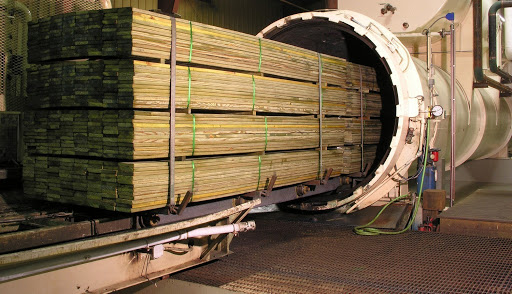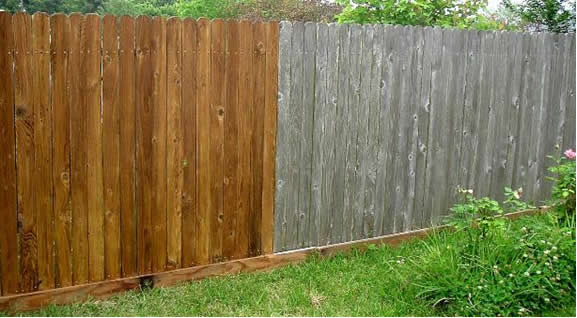If you have an exterior wood fencing project at your home or business, you should add fence staining and painting….period.
All fences constructed in an exterior setting should be constructed of pressure-treated lumber. Cypress, a native wood to our area has natural anti-pest properties and can stand alone without a pressure treatment. Although many years back, all fence pickets were made from cypress, due to the high cost and availability, this is no longer true. Pine is king in the south, so a pressure-treated product is needed. Bugs, mildew, and decay love pine and most all hardwoods.
Now the bigger problem. Only a few years back (2003), all wood was pressure-treated with chromated copper arsenate which worked great. Leaching into the environmental problems created an environmental problem which pushed the industry to switch to alkaline copper quat, or ACQ.
Here are the main reasons you should do fence staining or painting.
Firstly, as mentioned above, the pressure treatment process and chemicals have changed. Where it was not uncommon to see a fence without fence staining or painting still standing after 15-20 years was not uncommon. Now, we often see new wood fences with major problems in the 7-12th year. It is proven that adding a protective coat will to any fence will prolong its life.
Secondly, wood changes colors as it ages. To help slow this down, top coat protection will keep it looking new longer and help ward off the bugs and decay.
Thirdly, you can add whichever color you would like. This is great to match existing structures and the colors of your house and neighborhood if desired.

Staining adds color and depth to a fence. There are 3 different types of stain with 1 common ingredient that must be in all of them. And that 1 ingredient is a wood protector. Make sure that’s part of the stain or you are just getting a color.
1. Transparent-adds color but leaves the wood grain pattern visible.
2. Semi transparent-wood pattern will still be slightly visible
4. Solids- full coverage with a very little wood pattern visible
Now painting falls under the (solid) section but is much thicker and provides a more clean-cut painted look. Here you can choose a flat, semi-gloss, or gloss finish. In this category, we choose to use a high-quality deck paint which gives the ultimate protection.
If you do not want any color added and just a protective coat, then a waterproofing clearcoat will work fine.
The cheaper the stain or paint, the more often you will need to do it. As a rule of thumb, paints and stains that average around $40-$50 per gallon should be reapplied every 4-8 years depending on the fences placement.
1. Fences in full sun should be resurfaced every 4-6 years.
2. Fences in partial sun can make the 8 year mark and maybe a little more.
3. Fences in full shade can go 4-6 but make sure there is a mold or mildew inhibitior in the formula. If not, you can always buy and add extra to the mix.


Necessary cookies are absolutely essential for the website to function properly. This category only includes cookies that ensures basic functionalities and security features of the website. These cookies do not store any personal information.
Any cookies that may not be particularly necessary for the website to function and is used specifically to collect user personal data via analytics, ads, other embedded contents are termed as non-necessary cookies. It is mandatory to procure user consent prior to running these cookies on your website.